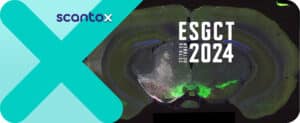In 2016, Alzheimer’s disease (AD) researchers extracted tau fibrils from the brain of an AD patient, allowing for the first-ever high-resolution look at the abnormal protein structures. By 2021, there were enough published data about tau structures to draw a phylogenetic tree of sorts, linking distinct tau twists to different diseases within the frontotemporal dementia (FTD) landscape. Now, it’s time to update that tree. Researchers Michel Goedert and Sjors Scheres recently expanded on these structural studies, adding an entirely new branch to the tau family tree and shedding light on the potential origins of different FTD tauopathies. The work was published on March 5 in the journal Nature Structural & Molecular Biology. Below, we’ll discuss the implications of this fascinating work.
Using Tau Structure to Map FTD Similarities
In the paper, the research team reported findings encompassing the V337M-tau and R406W-tau core structures. Both were a match with tau structures found in AD, as well as familial British dementia (FBD), familial Danish dementia (FDD), and primary age-related tauopathy (PART), all generally held under the FTD umbrella. To evaluate these tau structures, the team used cryogenic electron microscopy (cryo-EM). This led to a wide variety of valuable insights into tau structures. For example, the researchers were able to map paired helical filaments (PHFs) in three V337M-tau cases that were nearly identical to those in AD.
Building on Non-AD Tau Fold Research
The study also focused on non-AD tau folds, including the related chronic traumatic encephalopathy (CTE) fold. In the first of three studies led by Scheres and Goedert, the CTE fold was found in cases of subacute sclerosing panencephalitis (SSPE), a rare inflammatory condition that can arise in the wake of measles infection. They also reported the fold in amyotrophic lateral sclerosis/parkinsonism-dementia complex (ALS/PDC), as well as in vacuolar tauopathy (VT). The findings were clear: Different clinical syndromes can arise from the same fold. The tauopathy family “tree” has officially grown, which could have numerous implications for treating different conditions within the FTD landscape.
Scheres and Goedert’s research currently shows that multiple diseases can have the same fold — but a single disease will never have multiple folds. For example, all AD cases have the AD fold, as do all MAPT-V337M carriers with FTD examined so far. And while Scheres and Goedert are still determining what prompts the formation of specific tau folds, they suspect that the cellular environment in which tau misfolding begins may influence the “direction” of the fold. In the AD news resource Alzforum, the team wrote that “the Alzheimer tau fold probably forms as a function of age, but its abundance may be influenced by extracellular deposits, like those of Aβ.”
_____
While FTD diseases remain shrouded in mystery, this latest tau mapping dramatically improves researchers’ understanding of the tauopathy classification tree, essentially placing V337M/R406W-tau cases alongside AD, PART, FBD, and FDD in the top “branch” of the tree. These structural insights into different tauopathies may have a number of implications for the treatment of tau-related diseases. For example, understanding the difference in tau folds could have crucial implications for the development of drugs meant to target specific folds for molecular binding.
To study tau, Scantox Neuro offers several in vitro models, including a cell-free assay for the analysis of tau aggregation, a tau uptake assay to study tau uptake and seeding, and cell lines to study tau phosphorylation. Furthermore, several rodent models, including hTau and PS19 mice, as well as corresponding histological and biochemical analysis methods, are available to study tau pathology in vivo.
Scantox is the leading Nordic preclinical GLP-accredited contract research organization (CRO), delivering the highest grade of pharmacology and regulatory toxicology services since 1977. Scantox focuses on preclinical contract research services, supporting pharmaceutical and biotechnology companies with their drug development projects. Core competencies include explorative and efficacy studies, PK studies, general toxicology studies, local tolerance studies, wound healing studies, and vaccines. To learn more about our services and areas of study, please subscribe to our newsletter. And if you’re interested in partnering with us, please contact us online.











